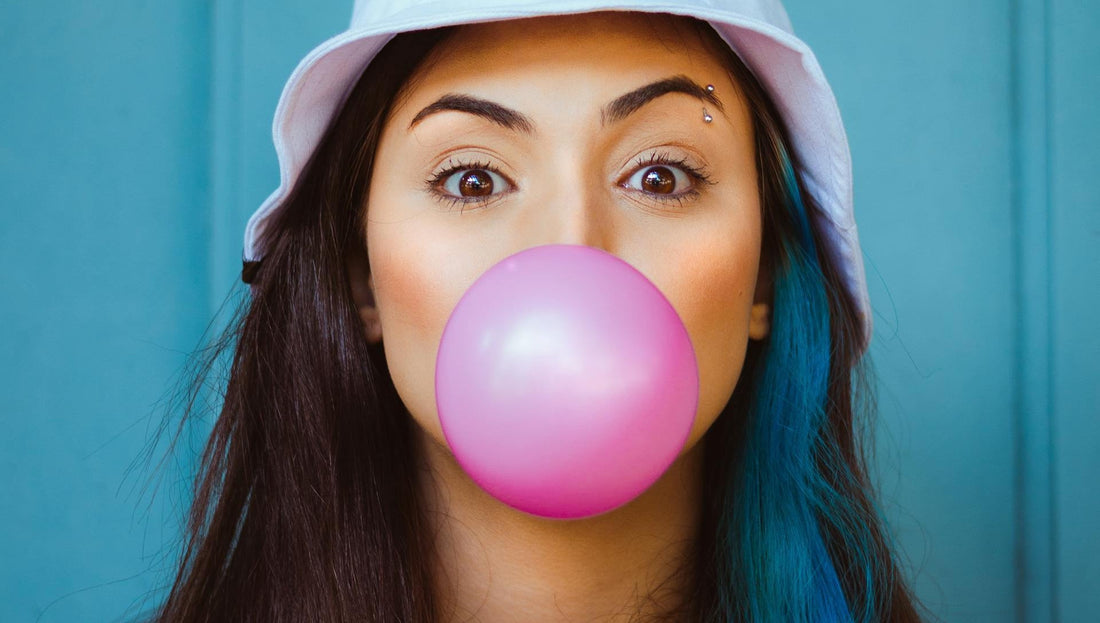
The Accidental Invention That Changed Everything: How Bubble Gum Was Born from a Beautiful Mistake
Some of the greatest discoveries in history happened by accident. Penicillin. Post-it Notes. The microwave. And in 1928, a 23-year-old accountant working at a chewing gum factory made a mistake that would bring joy to children (and adults) for generations to come. This is the story of Walter Diemer and the beautiful accident that created bubble gum.
The Young Experimenter
Walter Diemer wasn't a chemist or a candy maker – he was an accountant at the Fleer Chewing Gum Company in Philadelphia. But like many young people with curious minds, he spent his free time tinkering in the company's laboratory, experimenting with gum recipes just for fun.
The year was 1928, and chewing gum was already popular, but it had limitations. Regular gum was sticky, difficult to remove from surfaces, and definitely not suitable for blowing bubbles. Diemer was trying to create a new gum recipe, but he had no formal training in chemistry or confectionery.
That lack of formal training turned out to be his secret weapon.
The Happy Accident
On a random Tuesday in 1928, Diemer was mixing up another experimental batch of gum base. He was trying different combinations of ingredients, not following any particular formula – just experimenting. What came out of his mixer was different from anything he'd made before.
This batch was:
- Less sticky than regular gum
- More stretchy and elastic
- Somehow more... flexible
Curious, Diemer popped a piece in his mouth and started chewing. When he tried to blow air into it, something magical happened – it formed a bubble. Not just any bubble, but a large, perfect sphere that didn't immediately pop.
He had accidentally created the world's first successful bubble gum.
The Pink Decision
Here's where the story gets even better. Diemer's experimental batch was colorless, but he knew that if this was going to be a product, it needed visual appeal. He looked around the lab for food coloring and found... pink. That was it. Just pink.
He colored his bubble gum pink simply because that was the only food coloring available that day.
That random choice would define bubble gum forever. Today, when you think "bubble gum," you think pink – all because of Walter Diemer's limited color options in 1928.
The Secret Formula
What made Diemer's accidental recipe work? Modern analysis reveals his genius mistake:
Lower Resin Content: Traditional gum used high-resin formulas that were too sticky. Diemer's batch had less resin, making it less adhesive.
Perfect Elasticity: His mixture achieved the ideal balance of stretch and strength – elastic enough to form bubbles, strong enough not to break immediately.
Optimal Viscosity: The texture was just right – not too thick (wouldn't stretch) and not too thin (wouldn't hold air).
The Launch
Fleer released Diemer's creation as "Dubble Bubble" in 1928. The timing was perfect – right before the stock market crash, giving people an inexpensive way to have fun during tough times.
But here's the kicker: Walter Diemer never received a patent for bubble gum. He was just an accountant experimenting for fun, and neither he nor Fleer realized the commercial potential of what he'd created. That oversight would later allow other companies to create their own versions.
The Blue Raspberry Mystery
Fast forward to the 1950s, and bubble gum had evolved beyond pink. Candy makers wanted to create different flavors, but they faced a problem: most fruit flavors were already associated with specific colors in other candies.
Enter blue raspberry – the flavor that doesn't exist in nature.
Candy companies needed a blue flavor that wouldn't compete with existing products. They took raspberry flavoring and dyed it blue, creating a completely artificial but irresistibly delicious taste that became synonymous with bubble gum and childhood.
Blue raspberry bubble gum became the rebel flavor – it was obviously fake, obviously artificial, and kids loved it precisely because it was so wonderfully unnatural.
Cultural Revolution
Bubble gum didn't just become a candy – it became a cultural phenomenon:
- The bubble-blowing contest became a rite of passage
- Getting gum stuck in your hair became a universal childhood experience
- The "bubble gum pop" music genre was named after its sweet, artificial appeal
- "Bubble gum pink" became an official color
The Modern Legacy
Today, bubble gum remains largely unchanged from Walter Diemer's 1928 accident. Sure, there are sugar-free versions and different flavors, but the basic formula – that perfect balance of stretch and strength – remains his accidental masterpiece.
At Candy Lips, our Bubble Gum Soda celebrates both Walter Diemer's beautiful mistake and the blue raspberry revolution that followed. Every fizzy sip delivers that distinctive artificial flavor that tastes like childhood, playground contests, and the joy of creating something from nothing but air and determination.
Taste the accident that changed everything. Try Candy Lips Bubble Gum Soda today.
